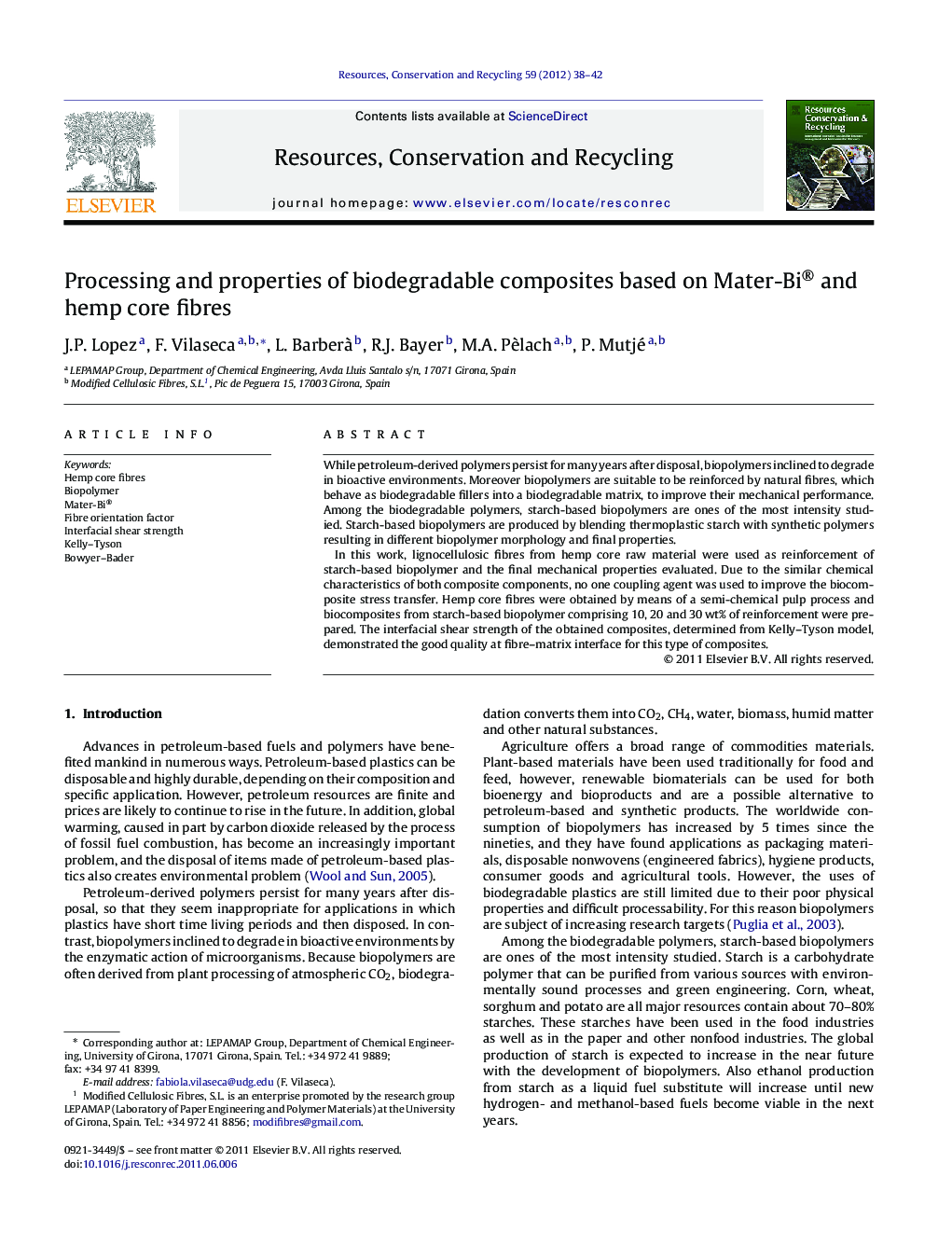| Article ID | Journal | Published Year | Pages | File Type |
|---|---|---|---|---|
| 1063361 | Resources, Conservation and Recycling | 2012 | 5 Pages |
While petroleum-derived polymers persist for many years after disposal, biopolymers inclined to degrade in bioactive environments. Moreover biopolymers are suitable to be reinforced by natural fibres, which behave as biodegradable fillers into a biodegradable matrix, to improve their mechanical performance. Among the biodegradable polymers, starch-based biopolymers are ones of the most intensity studied. Starch-based biopolymers are produced by blending thermoplastic starch with synthetic polymers resulting in different biopolymer morphology and final properties.In this work, lignocellulosic fibres from hemp core raw material were used as reinforcement of starch-based biopolymer and the final mechanical properties evaluated. Due to the similar chemical characteristics of both composite components, no one coupling agent was used to improve the biocomposite stress transfer. Hemp core fibres were obtained by means of a semi-chemical pulp process and biocomposites from starch-based biopolymer comprising 10, 20 and 30 wt% of reinforcement were prepared. The interfacial shear strength of the obtained composites, determined from Kelly–Tyson model, demonstrated the good quality at fibre–matrix interface for this type of composites.
► The preparation of semichemical hemp core fibres. ► The use of semichemical hemp core fibres as reinforcement of starch-based biopolymer. ► The good quality of the interface, which agrees with the similar chemical nature of the composite components. ► The quantification of the good fibre-matrix interface by means of the interfacial shear strenght.
